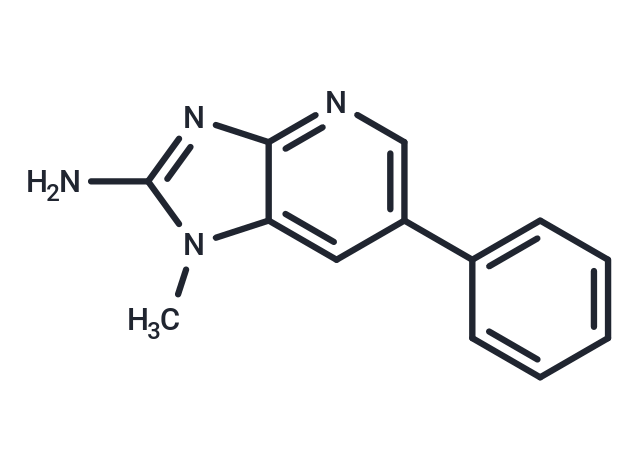Shopping Cart
- Remove All
 Your shopping cart is currently empty
Your shopping cart is currently empty

PhIP is a heterocyclic aromatic amine (HAA) from cooked meat. It belongs to pyridine heterocyclic amine and is a 2B carcinogen with estrogen activity. PhIP forms adducts with DNA that promote cancer.

| Pack Size | Price | Availability | Quantity |
|---|---|---|---|
| 1 mg | $136 | In Stock | |
| 5 mg | $338 | In Stock | |
| 10 mg | $513 | In Stock | |
| 25 mg | $818 | In Stock | |
| 50 mg | $1,080 | In Stock | |
| 100 mg | $1,480 | In Stock | |
| 1 mL x 10 mM (in DMSO) | $372 | In Stock |
| Description | PhIP is a heterocyclic aromatic amine (HAA) from cooked meat. It belongs to pyridine heterocyclic amine and is a 2B carcinogen with estrogen activity. PhIP forms adducts with DNA that promote cancer. |
| In vitro | PhIP exerts extensive impacts through the activation of estrogen receptor alpha (ERα), leading to significant and overlapping alterations in miRNA expression. This deregulation of miRNA by PhIP may serve as a critical non-DNA-damaging carcinogenic pathway in breast cancer. |
| In vivo | PhIP forms DNA adducts in the prostate, PhIP also induces oxidative stress, atrophy of the acini, and inflammation of the prostate of rodents. PhIP causes inflammation, epithelial cell damage, and prostatic intraepithelial neoplasia in the dorsolateral prostate lobe compared to the ventral lobe in hCYP1A-mice.[1] |
| Molecular Weight | 224.26 |
| Formula | C13H12N4 |
| Cas No. | 105650-23-5 |
| Smiles | Cn1c(N)nc2ncc(cc12)-c1ccccc1 |
| Relative Density. | 1.2067 g/cm3 (Estimated) |
| Storage | Powder: -20°C for 3 years | In solvent: -80°C for 1 year | Shipping with blue ice. | |||||||||||||||||||||||||||||||||||
| Solubility Information | DMSO: 22.5 mg/mL (100.3 mM), Sonication and heating to 60℃ are recommended. | |||||||||||||||||||||||||||||||||||
Solution Preparation Table | ||||||||||||||||||||||||||||||||||||
DMSO
| ||||||||||||||||||||||||||||||||||||

Copyright © 2015-2025 TargetMol Chemicals Inc. All Rights Reserved.